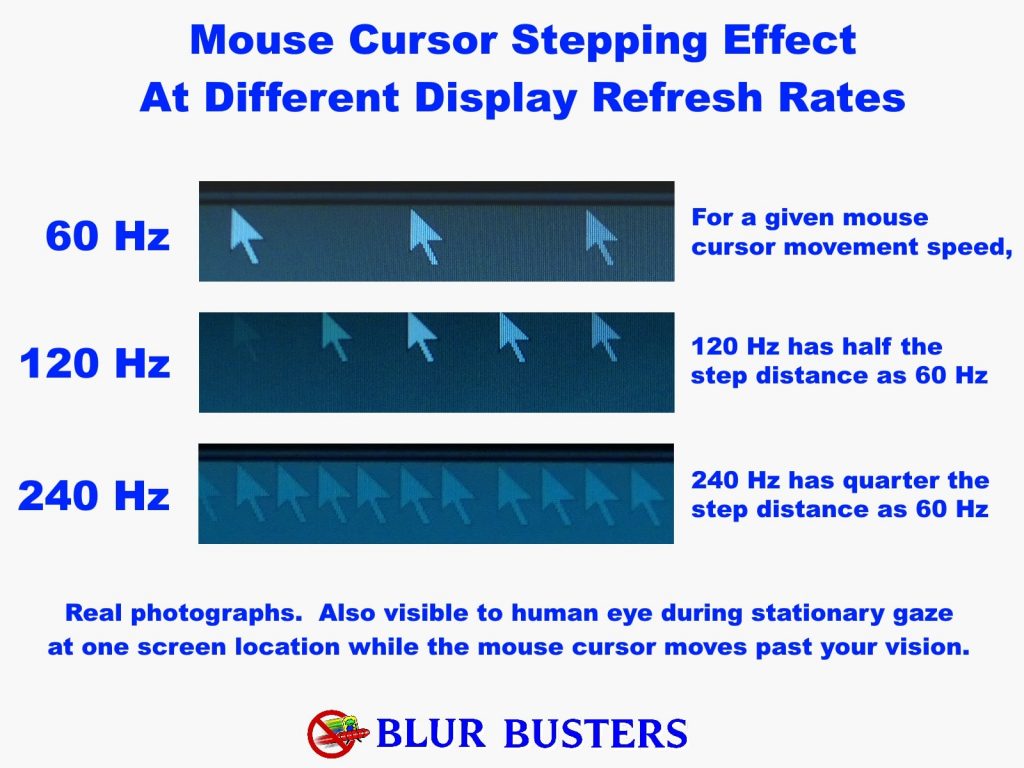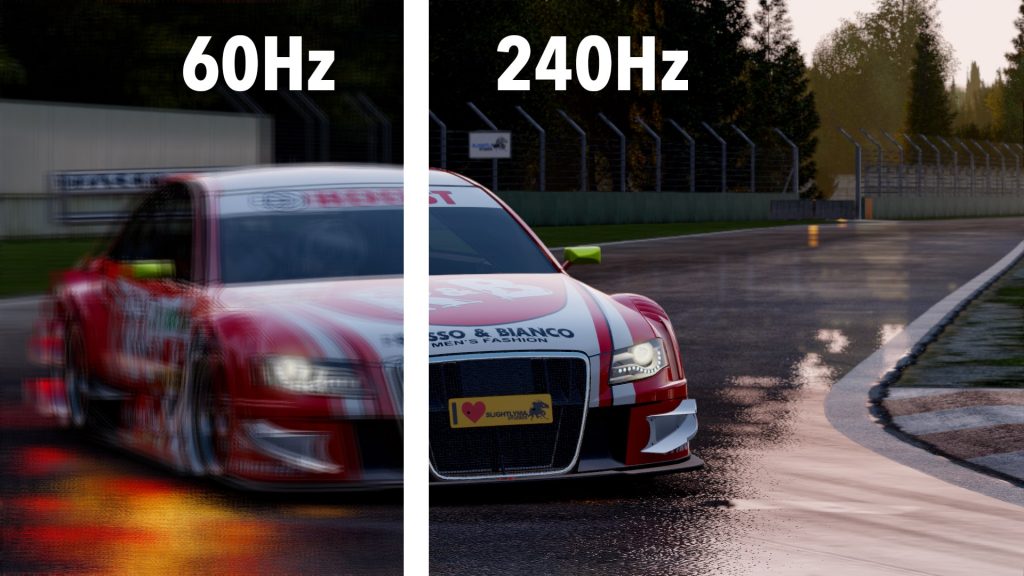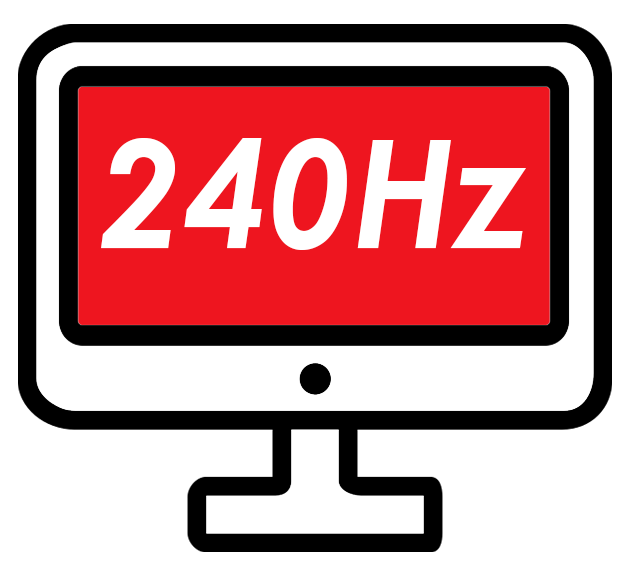SHORT ANSWER: 144Hz is good but 240Hz is better.
If you own a powerful computer or play competitive games then we highly recommend investing in a 240Hz monitor. There is no substitute for the smoother gameplay and improved responsiveness that you will experience from the higher refresh rate. Read on to find out more about our opinion of 240Hz vs 144Hz monitors
We recommend you spend a few minutes watching this youtube video where Linus from Linus Tech Tips and Gav from the Slow Mo Guys explains their findings on whether 240Hz Monitors matter for gaming:
What is a refresh rate?
The refresh rate (measured in Hertz) represents the number of times per second that the monitor can update the screen with new images. So, the higher the refresh rate, the more frames your monitor can display every second resulting in a smoother and more fluid gameplay experience.
If you are viewing this article on a 60Hz monitor try moving your mouse pointer around quickly in circles and you will notice that your mouse cursor motion actually appears quite jagged due to the low refresh rate. On a higher refresh rate monitor, the mouse cursor movement will appear smooth. This is the same principle that applies to your in-game experience.

Many gamers say that the difference between 144Hz vs 60Hz monitors is much more noticeable than the difference between 240Hz vs 144Hz monitors which we would agree with. If you look at the figures below you can see that the jump between 144 to 240 is smaller than from 60 to 144.
- A 60Hz monitor will display a new image every 16.66ms
- A 144Hz monitor will display a new image every 6.94ms
- A 240Hz monitor will display a new image every 4.16ms
However, this does not mean the difference is not significant. Comparing 144Hz vs 240Hz the monitor will go from displaying a frame every 6.94ms at 144Hz down to one frame every 4.17ms at 240Hz. This means you will most definitely experience a benefit in the smoothness and fluidity of the images on the screen.
Watch this slow-motion comparison of the different refresh rates in real gameplay:
Benefits of a 240Hz refresh rate
- Reduced Motion Blur
Motion blur is the main problem associated with a lower refresh rate. The higher the refresh rate, the better the monitor can reduce motion blur due to the ability of the monitor to refresh images faster (providing our brain with more visual information), this is especially important during intense, high action or fast-paced gameplay.

- Faster Reaction Times
With a higher refresh rate, there is a shorter period between frames, therefore the visible input lag decreases so you will be able to spot and react to enemies quicker. This is why 240Hz has been established as a standard in all major competitive FPS leagues.
A recent study released by NVIDIA shows that competitive players’ scores in battle royale games improve with 240hz vs 144hz monitors.
Conclusion 240Hz vs 144Hz
144Hz is good but 240Hz is better.
We highly recommend investing in a 240Hz monitor if you have a powerful enough computer and play fast-paced FPS games like CS:GO, Fortnite, Overwatch, Apex Legends or Battlefield.
